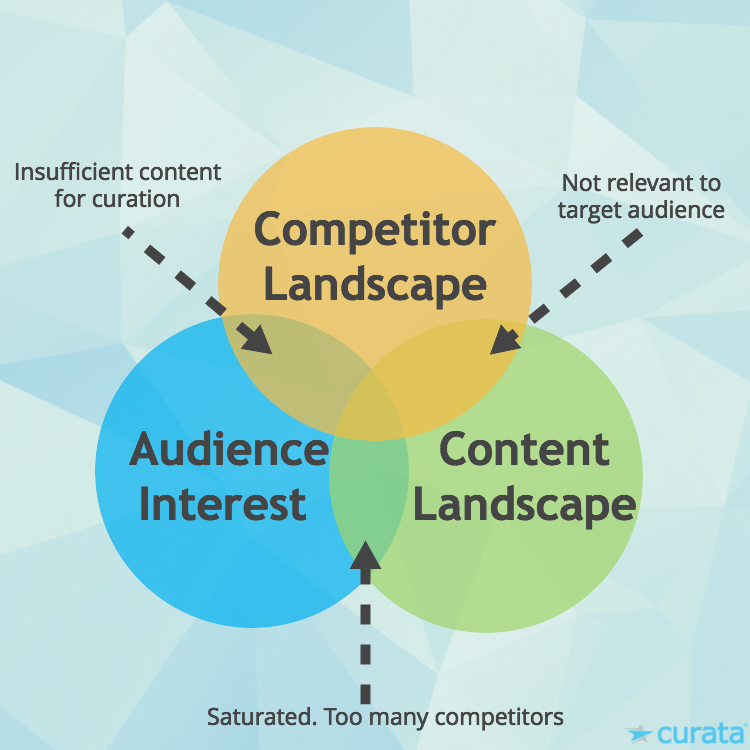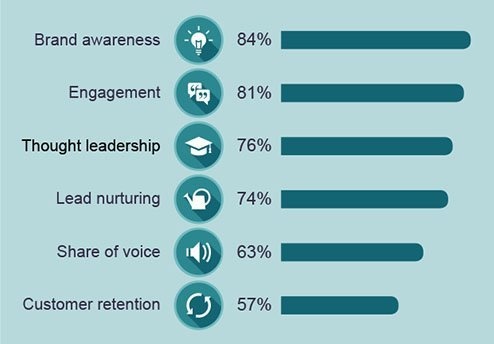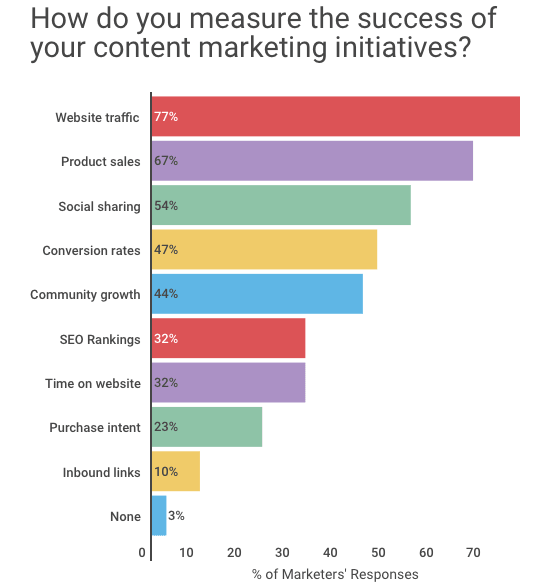With an exponential growth of competition on the digital landscape, businesses are increasingly focusing on high quality content to effectively market their brands. Search engines are coming up with advanced algorithms that reward brands which drive huge amount of engagements with relevant and informative content.
In view of this, content curation has become a potent strategy and an integral part of social media marketing. Today, social media channels are a powerful vehicle that draw people’s attention with quality content, which is changing their lives for better. Thus sharing relevant content on social media is at the heart of content curation that factors in a variety of perspectives meant for providing value to the people at large.
What is content curation and why is it important?
To put it simply, content curation is the act of consistently, finding, gathering, organizing, annotating, interpreting, and sharing the most relevant content on a specific topic for the benefit of the people. Content curation is not necessarily content creation. Rather, it’s more of finding high value content pertaining to a specific category and funnelling that information to the readers.
When performed in a right manner, content curation also improves your SEO to enhance the visibility, establishes your credibility as a thought leader, supports lead generation, streamlines lead nurturing, and complements social media and blogging.
To understand content curation better, you have to gain the insight as to what activities don’t constitute curation. So to begin with, curation is not an automated process that is computed by algorithms. First, “content farming” is just generating large amount of content that is heavily loaded with keywords and is only intended to generate advertising revenue. Second, “licensed content” is getting hold of content of an author by paying him to keep readers on your site. Third, “scraping” is the act of copying content from other websites.
Image source: Edublogs Teacher Challenges
Now content curation on social media is important for the following reasons:
- It educates and informs your prospects
- It offers solutions to pressing issues
- It addresses concerns of your customers
- It answers pertinent questions
- It provides a great entertainment value
Here are some important content curation strategies for your social media marketing campaign:
- Know Your Target Audience
The first and foremost step towards a successful content curation is to know who your target audience is. The primary objective of having a social media presence is to build trust with your audience and become a relevant authority in your industry. So when you provide useful curated content to your social media followers, they will become your loyal customers, and hence the more opportunities will arise for your business to grow.
Curating the industry content doesn’t mean only sharing the content that suits your brand. You also have to focus what your audience wants. It’s in your advantage to make sure that your curated content solves a real problem, which is interesting as well as timely.
Image source: Curata
To better understand the content needs of your audience, social media itself can provide you with invaluable data. It can give you a clear idea about the demographics, age, gender, qualification and even the spending capacity of your audience. Without properly understanding the communities on your social media platforms, it is impossible to build an audience online. Thus every single piece of content you put on your various social media profiles should be aligned to your audience’s interests. As a result, you will be successful in moving your prospects towards conversion.
- Research Your Competition
While putting a sound content curation strategy in place, surveying the competitive landscape can give you a distinct edge. Your competitors can include anything from similar businesses as yours, content publishing companies, thought leaders, bloggers, and experts. The common objective of all the competitors is to beat everyone else in the similar niche. This is where the curation comes to your rescue, which provides you with proper resources and topics that cover relevant content and resonates with your audience.
There are two principle ways in which your competitors’ content help you: First, you learn what works best in your industry. Secondly, you create better alternatives with better insights to their existing content. Competitor analysis is all about taking a positive vantage point. The more amazing content your competitors are publishing, the more you can learn from them, and the better curation practices you can use.
Image source: ISA Sarnia
It also helps you identify the strengths and weaknesses of your competitors’ content strategy, allowing you to build a strong foundation for yourself. Hence, if you don’t consider your ‘content competition’, you’re overlooking an important factor for content visibility.
If after research, you find a well-maintained and already curated topic, you can still use it to your advantage. How? By using the following three key approaches:
- Determining whether you can curate it better by being more comprehensive and relevant.
- See if there is a different perspective or opposing point of view that you bring to the table.
- If you can broaden or narrow the topic as per the requirement of your audience.
- Be Sure Of What You Are Trying To Achieve With Content Curation
The effective content curation strategy is also tied with what you want to achieve with that. As part of your bigger marketing plan, content curation needs objectives that are associated with those of your business, and should be precise and quantifiable.
The following are certain specific goals of content curation:
- To be a reliable service: In order to become a reliable source of useful content, you need to curate something that can greatly help your target audience. While trying to establish yourself a trusted service, you can offer more resources to your audience. At the same time put your business on the map.
- Become an authority in your niche: Whatever channels you are using to put across your curated content, you need to turn these sources into highly reliable sources of information. You have to be extremely focused as well as customer-centric in order to succeed.
- Display thought leadership: For displaying a strong thought leadership, you need to become a subject matter expert. When you share your real experiences and expertise in the form of curated content, it becomes a high value insight for your audience. Moreover, answering the queries of your target groups as a thought leader, your curation efforts get a force multiplier.
- Marketing purposes: Essentially, content curation can be used for virtually all marketing goals: from branding and acquisition to even lead generation or customer service. As a brand, you need to intuitively serve your audiences and get their attention.
Image source: Inboundli
- Incorporate A Methodical Process For Content Curation
Curation is all about giving a boost to your content marketing efforts on social media. The impactful content that you seek for your learners may already have developed, but you simply don’t know where to find it and how to tap it. Internet today is overburdened with good and not so good content, and you can’t just sift through it as the research could take too long. Without a systematic process, you’ll be hard-pressed to find the quality content, especially when you have to do it on a regular basis.
You need to develop a systematic process that is comfortable for you and raise your content curation operations to the next level. Follow new trends, identify top blogs, and find new agencies that can provide you with good insights. It’s also a nice approach to undertake whenever you are trying to come up with better ideas for your content marketing strategies. So a methodical process helps you curate the content that is relevant, credible, with different point of view, and unique.
- Frame Your Curated Content Well
The whole point of curation is you are adding value to the content after properly organizing it. For that, you need to frame it well and share it in a manner that you become a go-to place to find the best content. The correct framing can make or break your effective curation.
If you want to retweet or share a relevant content on your social media channel, the right framing requires you to go beyond the headline. You should add your own context to it. Curating the content in this way makes it better as you highlight it in a new way. In other words, you add a new perspective to make it more interesting and sharable. In its true sense, proper framing means you know how to use content to increase conversion and sales.
Image source: The Social Media Hat
As we mentioned, proper framing is akin to value addition, and there are many ways to do that. The great curation needs you to apply your expertise much more than just tweaking or editing. You can employ the following tactics:
- Sharing content with the right people at the right time.
- Using effective SEO strategies to uncover keywords and drive traffic.
- Wider distribution of content
- Funnelling the content to a bigger platform so that more and more people can benefit from it.
- Restructuring a post to make it more readable/shareable overall.
- Engage Influencers On Social Media With Curation
Working with industry influencers can be a game changing strategy for your brand to gain a wider acceptance across social media. There are two ways with which you can work with influencers – they can amplify your voice and take your content to their audience, or you can share their high value posts in your niche. Either way, you are ending up with a much wider reach. As a matter of fact, it is really hard to cut through the noise, so you need the help of credible, trusted, influential people in your industry. They can amply help you in identifying, managing, engaging, and activating your social media community.
Image source: BigWing
Furthermore, by curating your influencers’ content, it can take relatively less time to achieve your marketing goals. You can develop a working relationship with them and tap on their audience. All it takes at your end is do some research and create a list of 10-20 influencers to start with. Connect with them on all of their social channels and subscribe to their blog feeds.
- Use Content Curation Tools
As we have thoroughly discussed so far how effective content curation helps position you as a thought leader and trusted brand in your niche. It’s also an economical way to maintain a consistent publishing schedule of meaningful content that resonates with your target audience. But manually finding the right content for your users can be a bit time consuming, which is why you need a touch of automation. This is where content curation tools can efficiently guide you through.
Here are some of the most effective tools at your disposal:
- Scoop.it
With over 2.5 million users, Scoop.it is a powerful tool that allows you to search for content according to keywords. With the help of this tool you share curated content directly to your social media platforms. By helping you getting most from your curated content, Scoop.it also serves as an effective ROI measuring tools.
- BuzzSumo
When it comes to content curation, BuzzSumo can intuitively be called a smart marketer’s tool. It always keeps you updated with the latest trending topics in your niche whenever relevant content gets published. You can easily search your content using engaging topics, and share it through the dashboard.
- Flockler
Flockler is a curation platform that efficiently allows you to gather your information, publish it in different places, and provides valuable insights to your users. It brings fans from your industry to your products or services. Flockler allows you to draw people in by using snippets of media feeds and curated content from around the Internet.
- Trap.it
Trap.it is an intelligent curation tool that helps you pull in the most relevant content from across the web. All the insights that this tool gathers including industry research, trends, statistics, etc. can be organized into topic-specific libraries for instant reference. With Trap.it you can distribute the curated content you’ve “trapped” across all social platforms to engage your audience.
- Storify
A popular content curation tool, Storify allows you the find the online voices that matter to your target audience the most. It presents your curated content in phase, single hit, or narrative way. With this awesome tool, you can create massive collections, build a series of related posts, or hit your viewers with one-off presentations.
- List.ly
List.ly allows you to gather your information together in useful lists, and which readers can then up-vote or down-vote each part. With this tool, you can easily find content that will be more impactful, and which content you might want to stay away from.
- ContentGems
ContentGems is a user-friendly content curation solution that chiefly concentrates on efficiency above all else. It is aimed strictly for professional content marketers. The tools allows you to monitor over 200,000 news sources and receive filtered results that suit you and your target audience. The best part is it is well-integrated with popular platforms like Twitter, LinkedIn, Facebook, Google+, WordPress, Buffer and HootSuite.
- ContentStudio.io
A delight of many content marketers, ContentStudio.io allows to information from social media, from other websites, from other news sites, and from trending content streams. Using this tool, you can create your own news feed and/or curated content website. You can also build a niche website with the viral content you pull from the Internet via the Content Studio tools.
- Curated.io
Curated.io is a simple, easy, and effective tool that dedicatedly helps you collect engaging content that you think your target audience will enjoy. To curate the researched content, you can use Curated.co tools to handle the design side of the process for you. Because of this simplicity and efficiency, it has to be the part of your content marketing toolbox.
- DrumUp
The DrumUp tool was created with social media in mind as it helps you concentrate as well as establish your social media presence. This tool helps you discover the most engaging social media content that is both going viral, and that is likely to go viral. So allow your users to discover powerful and enticing content with your curated posts, and prompt more social media conversations.
- Measure your content curation results
Unless you measure the quality and consistency of your content curation efforts, you can’t fully know that you are on the right track. When you successfully measure your results, you can use it to score your ability to discover, share, and improve your content. According to a survey free citation generator by Trapit, 74% of marketers call content curation an important part of their content strategy. So you also need to know whether your audience accepts your content. Evaluating the engagement rate like the number of likes, comments and shares are one of the best ways to evaluate the content.
Image source: Tint
The other main metrics to look out for measuring your content curation results are: Page views, Count visits, Visitor trends, Increase/decrease in the number of subscribers, Retweets, and Growth of followers. Thus, tracking all these metrics is an excellent reality check to ensure that your content curation focuses on the topics your market will be most interested in.







